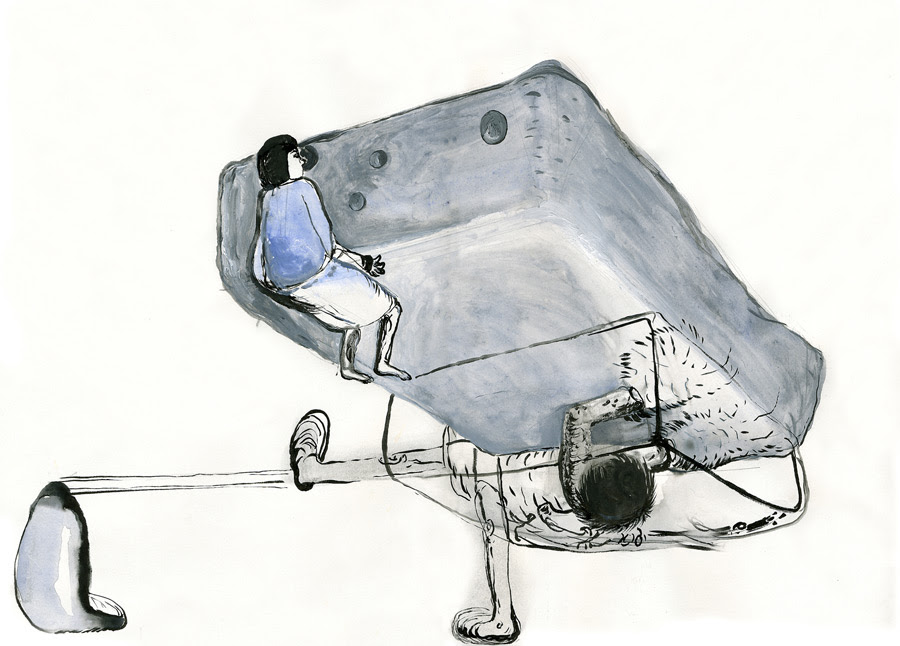Written by Christian Hazes, Staff Writer, and Phillip Morris, Editor-in-Chief
When empires fell their cities were ransacked and rebuilt in images to the liking of the conqueror. This city was raised as a monument to digitalization’s triumph over analog. Wires, sensors, and the gadgets people wore gave the city a nervous system to regulate itself, and the people living within it. With the only exception being the bad parts of town where it was deemed a bad investment to build the cybernetic infrastructure, and where few people could afford the latest smart devices. In this blindspot the government needed to be content with using aging smartphone data and social media posts.
The most basic, and constant, function of installing such a thorough network is monitoring the ebb and flow of the city’s inhabitants. In the morning large swaths leave the residential areas for the business districts, and in the evening they return. While the system can, and does track each individual, at these peak times people can find anonymity in the crowd as their individual dot merges with many others, so that to the human eyes watching them the traffic is only a continuous stream. On the weekends the movement of the dots was a bit more random.
Jennifer was glad for this weekend, as it was the first in a long while that she didn’t need to pick up an extra shift cleaning some high rise office or hotel. On top of that, not only was she free from work, but she was free from parental responsibilities as well. Emmie had made plans to meet up with James at his new place across town. Her’s used to be the hangout house until James’ dad got a new job and moved the family to a “nicer” part of town. Jennifer didn’t mind where she lived, there were plenty of parks and things to do, besides, she’d grown up there. The only complaint she had was the concentration of unsavory types that had come in recent years. Everyone knew that if you wanted a chance of not getting caught doing something you shouldn’t, you’d better do it in the Dead Zone. Last year a condemned apartment building collapsed on itself after a meth lab hidden inside exploded. She wouldn’t have wanted that that to happen anywhere else either, but at least if there had been some city sensors in the area it might’ve been caught before getting that far.
That incident wasn’t on her mind today though. It was such a bright and sunny day that she was determined to enjoy it in a park. She got John out of bed with a kiss and the promise of a cheeseburger for lunch.
“You can lay about in the park just as easily as you can here” she goaded him. It was always a struggle getting him to go for walks, but he knew he needed it as much as she did.
John had dragged his feet when they first left the house, but by the time they could smell the park’s fresh-cut grass even he was getting into the idea of being outside. The park was a hive of activity by the time they got there. Kids occupied nearly every climbable surface with just a few adults sprinkled here and there. It was one of the few places in the neighborhood the city had wired so most parents were comfortable letting their children play there alone.
Some kids hit a baseball in their direction and John plucked it out of the air with ease before sending it straight into the glove of the closest young player.
“I should come back here with Emilio” he said, “Get him warmed up for the season.”
Jennifer hugged his arm tightly as they continued to walked. There was a snowball’s chance they’d be out here without her pushing them out the door.
John stopped suddenly and clutched his chest.
“John?”
He tried to brace himself on her arm but his weight took them both to the ground.
“Help!” she screamed. Tears were already rolling down her cheeks, burning hotter than the yellow sun overhead.
Not much later something different was hovering over the couple. The defibrillator carrying drown had been dispatched before John had even registered he was in trouble. Miles away in a cold dark room, a computer had noted the change in his gait and vitals that statistically indicated an oncoming heart attack. The difference between life and death is often just a matter of minutes, maybe even seconds. Time is one of the most resilient adversaries, but technology had kept it at bay this day.
Jennifer accompanied her husband to the hospital when the ambulance arrived. She stayed with him even after the doctors said his sedatives would keep him asleep all night. The rational part of her brain knew that he would be alright and that there was nothing she could do to help, but irrationality is a part of being human, she was committed to staying by his side. She called James’ parent to ask if Emmie could stay with them for the night. He could stay as long as she needed. Then she put her phone on silent so she could focus on being with her John in this moment.
The drone had got to them quick, and no lasting damage was done to his heart so keeping him sedated overnight was just a precaution, but she still remembered a time when routine hospital stays could end in death. As she looked out the window at the setting sun she was thankful those days were long gone.
She would’ve felt less at peace with how life in the city had changed, if she knew that not all technological advancements are for the people’s benefits. At least not people like her.

Photo by Josh Riemer
Cities have always benefited from a diversity in their population. Different people have different ways of thinking and those ideas intermingle to drive innovation and progress. Technology has also been a driver of progress, and those that manage this techno-, wired-, cybernetic-, smart-city believe technology is the only ingredient needed for progress.
While retirees were prone to complaining about the lack of privacy, and how they “couldn’t take a shit without the government asking if they wiped”, the majority of people in the city didn’t think twice about the tech integrated into the fabric of their lives.
Emilio was born and raised in the present era. For him, the idea of not being able to look up at least the basic details of anyone you just met was something for the history books. He couldn’t come to grips with how it would be to live in a city surrounded by total strangers.
“That must’ve been so stressful,” he said once in class while they were discussing civics.
“We didn’t mind”, his teacher told him. “When you wanted to know someone better you just had to ask them.”
Who had time for that? he thought.
That same thought crossed his mind again when James’ parents told him he’d have to spend the night because his parents were in the hospital. Who has time for that!
They tried to keep the mood light during dinner. They mentioned how Emilio’s latest growth spurt left him too long for his clothes. They promised that only very rarely did anyone die from a heart attack while in the hospital; not with the fancy monitors and algorithms double-checking the doctors. Emilio was old enough to know that rarely was not the same as never.
Emilio has made up his mind that he needed to be with his dad. Getting ice cream after dinner wasn’t enough to distract him. Neither was beating James at video games enough to calm his mind. While they were supposed to get ready for bed, Emilio told James his plan. He was going to sneak out when James’ parents went to sleep and make his way to the hospital.
Their parents might be angry with him sneaking out, “but, you know, it’s easier to say sorry than get permission.”
James didn’t try to stop him, cementing his place as the best friend, so he got into bed and pretended to be asleep while Emilio snuck out the window.
Emilio got a few blocks away before he realized he’d forgotten his phone. He knew the direction of his house, be the finer details were lost on him. He told himself he wasn’t scared to be alone in a strange part of town at night, but that’s not what the cameras saw.
The city was testing a new predictive policing strategy. After only a week it was already reducing crime in the neighborhoods it was deployed, not that there was much crime in the wired parts of the city to begin with. Still, there were much fewer calls about suspicious characters prowling around.
Emilio came to a corner that in no way looked familiar. He nervously glanced around for a clue which direction he should go. Miles away in a cold dark room, a computer picked up his nervousness and that he was suspiciously without a cell phone. It noticed him move towards the door of a house then change his mind when the front light turned off.
Emilio had just set off in what he was sure was the right direction when the police car rolled up behind him. A voice barked at him to stop. Emilio tried to explain what was happening. He told them to call his parents or James’, but the police weren’t inclined to listen. Besides, if the system told them to take the boy in that’s what they had to do.
Emilio was glad James hadn’t come with him because he cried when they put the handcuffs on. Then, to make matters worse, the police car was far from comfortable. Emilio needed to twist into awkward positions to keep from sliding around. He waited for an hour at the police station before their system synced up with the hospital’s to confirm his story.
When the officer’s escorted Emilio to his dad’s room in the hospital, his mom was asleep on a cot. Emilio would always remember how they didn’t apologize to him or her, and instead just explained how they system was still working out the bugs.



